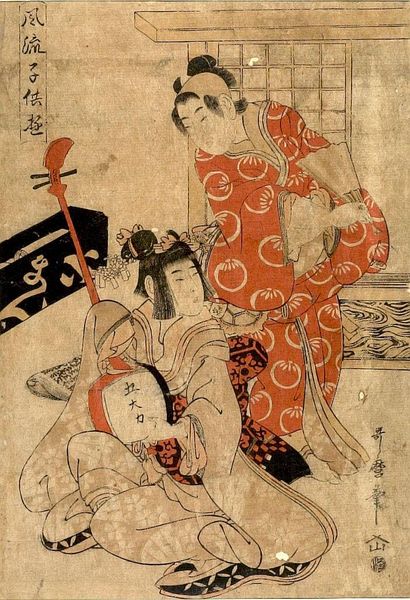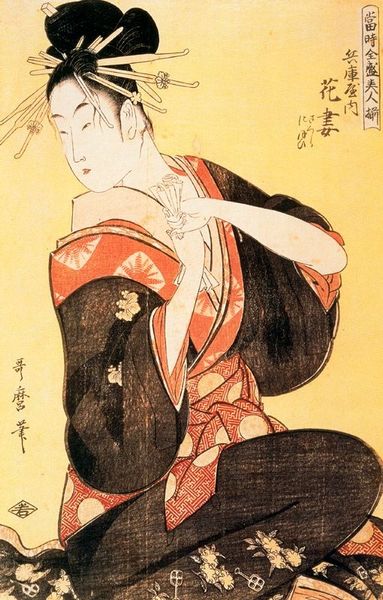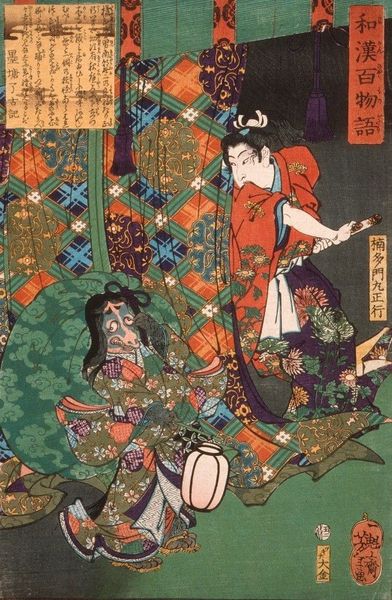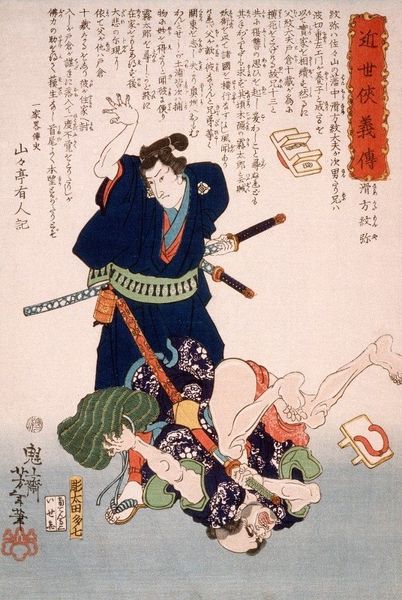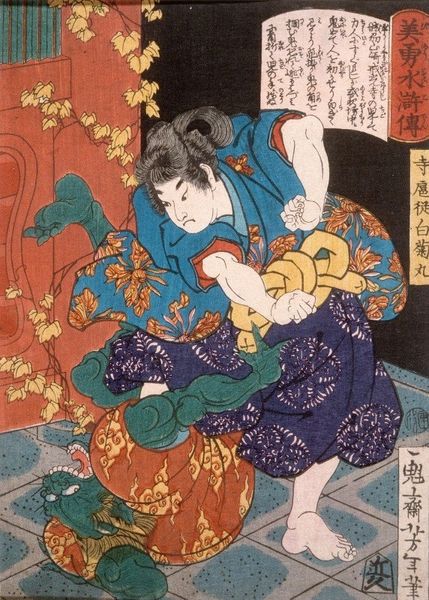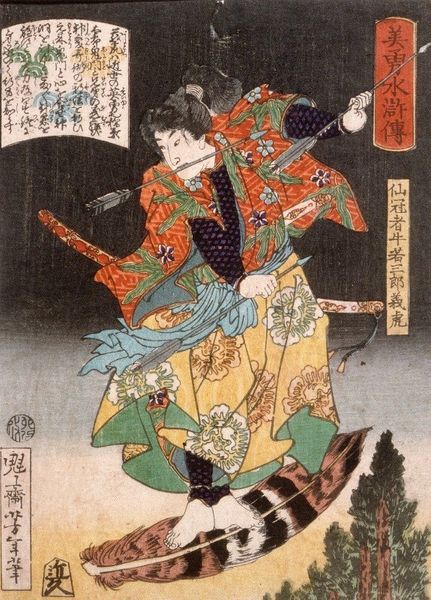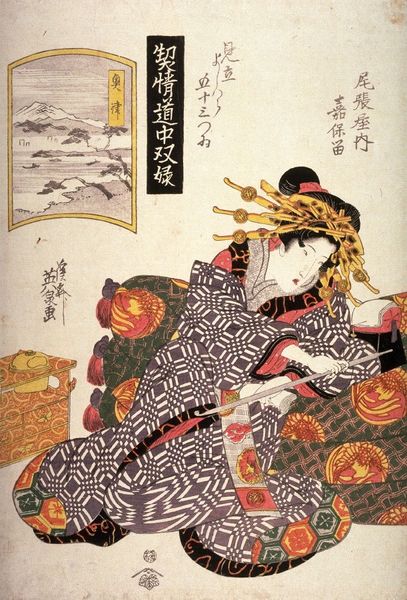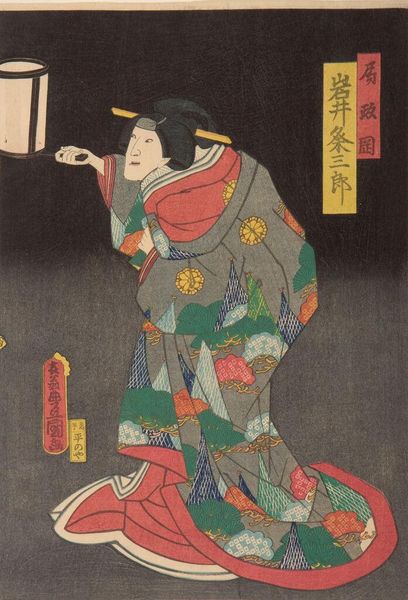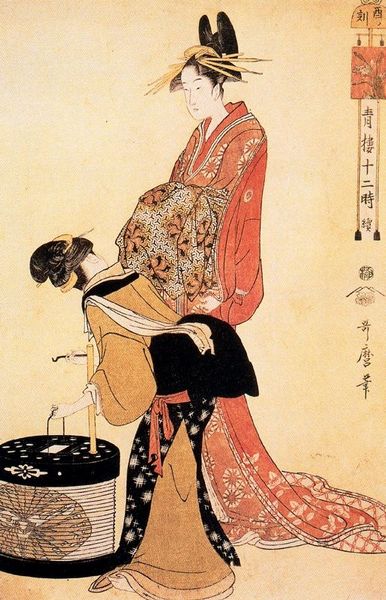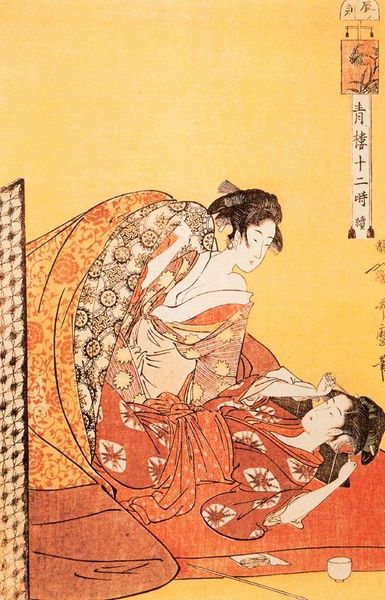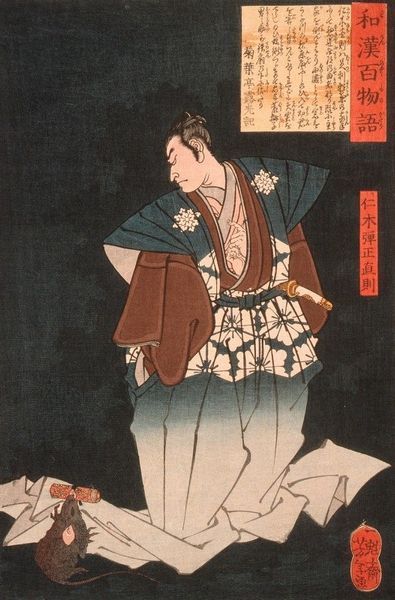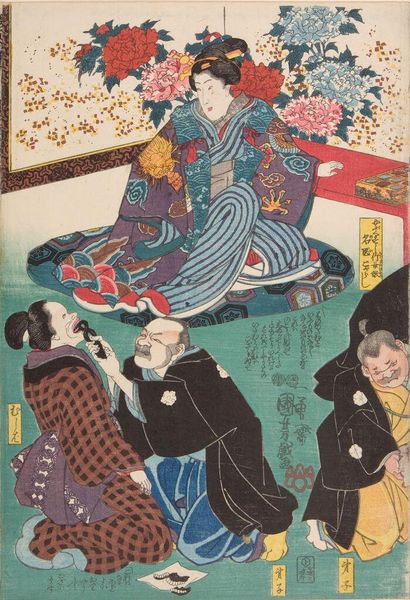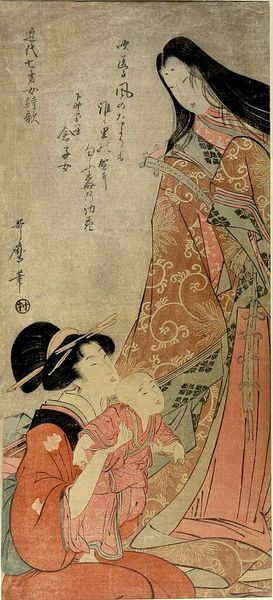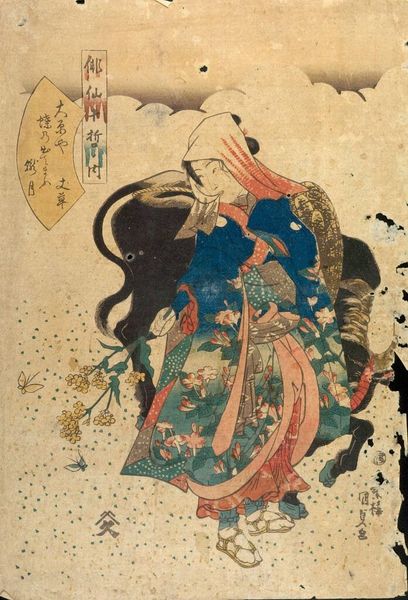
painting, print, intaglio, woodblock-print
#
portrait
#
painting
# print
#
intaglio
#
asian-art
#
ukiyo-e
#
woodblock-print
#
female-portraits
Copyright: Public domain
Curator: This intriguing piece is a woodblock print entitled "The Hour of the Boar," created by Kitagawa Utamaro, currently housed in the British Library. What strikes you about it initially? Editor: There's a serenity to it, despite the suggestive title. The subdued colors and delicate lines evoke a quiet, almost intimate atmosphere. It feels very considered and self-contained in terms of its planar construction. Curator: Indeed. Utamaro was a master of capturing the essence of feminine beauty in ukiyo-e prints. Looking closely, the composition emphasizes the intricate details of their kimonos, notice the varied geometric designs, floral motifs, and their contrast of black with soft red hues. Editor: Absolutely. The bold black of one kimono dramatically sets off the intricate red pattern of the other. But the composition seems to emphasize hierarchy: one woman stands regally, while the other kneels, in an almost submissive pose. Is that socially relevant, do you think? Curator: Ukiyo-e prints, while often depicting pleasure quarters, weren't necessarily straightforward representations of social dynamics, but frequently played with idealised situations or eroticised relationships. The artist also has chosen the figures to be captured mid-ceremony, mid tea offering, in an effort to ennoble such rituals. Editor: The title also plays with this ideal. “The Hour of the Boar" refers to a specific time of night – around 10 PM, known as when encounters take place. Utamaro hints at the sensuality underlying these seemingly graceful and composed women through temporal symbolism. The artist really did take the time to embellish such scenes of public accommodation. Curator: Furthermore, let's not forget the technical virtuosity of woodblock printing. The lines are incredibly fine and precise, achieved through painstaking carving and layering of colors. Editor: Agreed. The artist also creates volume through minimal hatching and line work; one gets a great sense of depth. I do wonder how contemporary audiences would interpret these portrayals of courtesans, removed from the original context. Curator: The context certainly shifts, but Utamaro's technical skills, combined with these glimpses of an earlier society, still have enormous drawing power today. His legacy thrives here in the twenty first century.
Comments
No comments
Be the first to comment and join the conversation on the ultimate creative platform.
